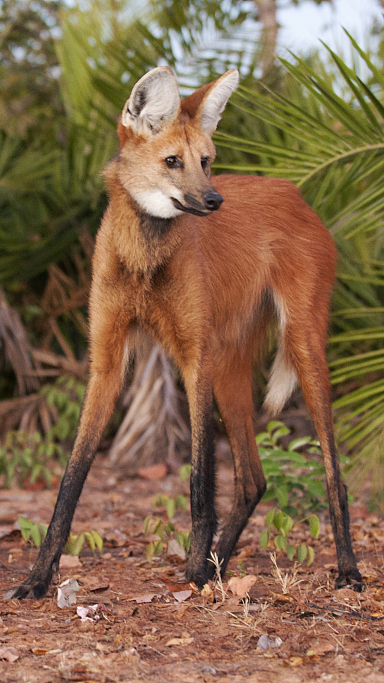
Who is this graceful long-legged lady? /VCG Photo
Who is this graceful long-legged lady? /VCG Photo
The animal in the picture above looks like a hybrid of a red fox and a yellow dog. But you cannot ignore its most eye-catching characteristic: How can its legs be so long?
00:48
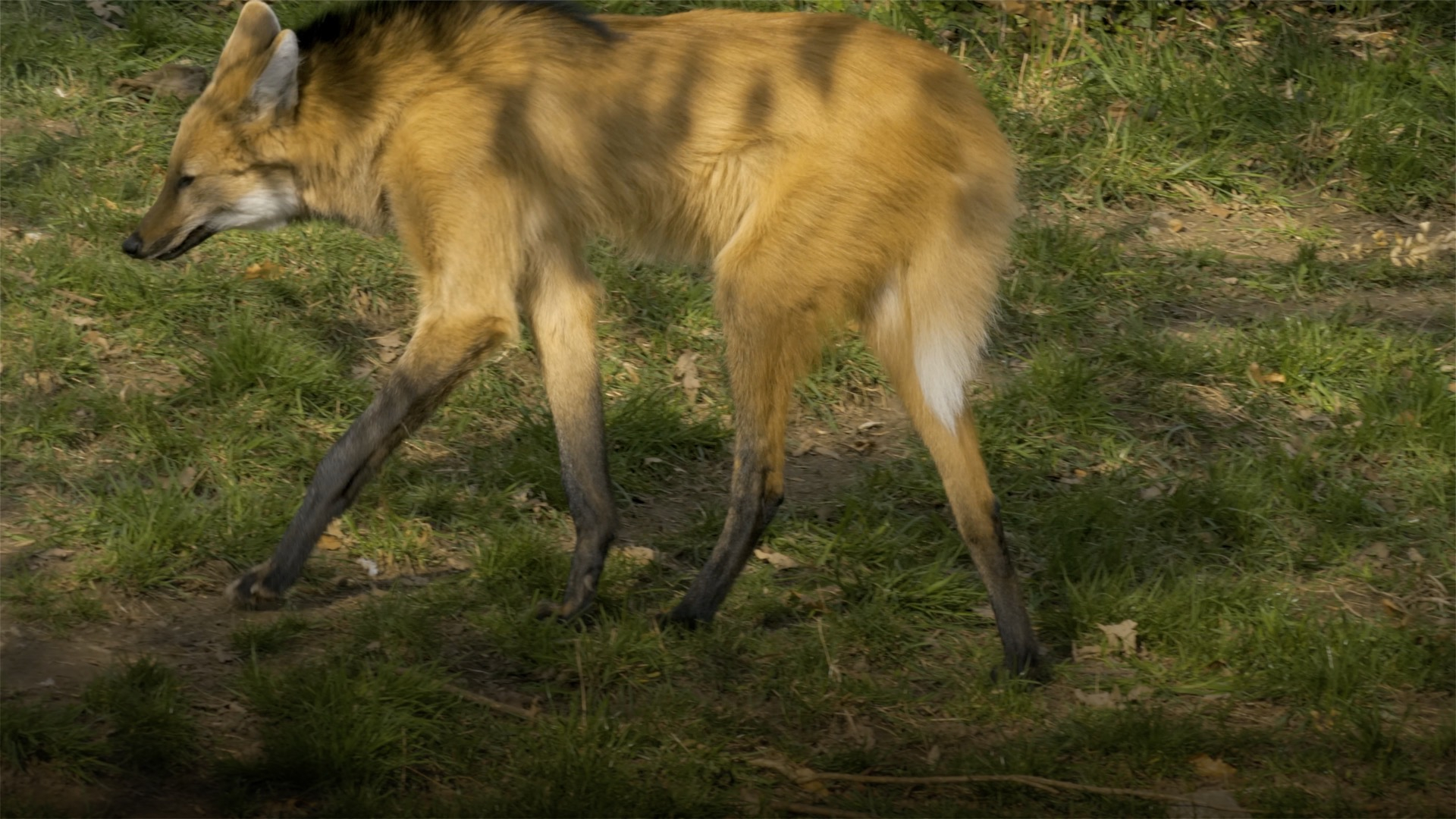
This is a maned wolf, the largest canine in South America. It is neither a wolf nor a fox, but belongs to its own genus.
The maned wolf can be as heavy as 20-30 kilograms. The name comes from the streak of black mane hair on the neck.
The maned wolf is a "supermodel" in the animal kingdom with its long and slender legs. An adult maned wolf is about one meter in length, and stand at 90 centimeters tall. It is the tallest of all wild dogs. The long legs help it adapt to the habitat, where the grass is tall.
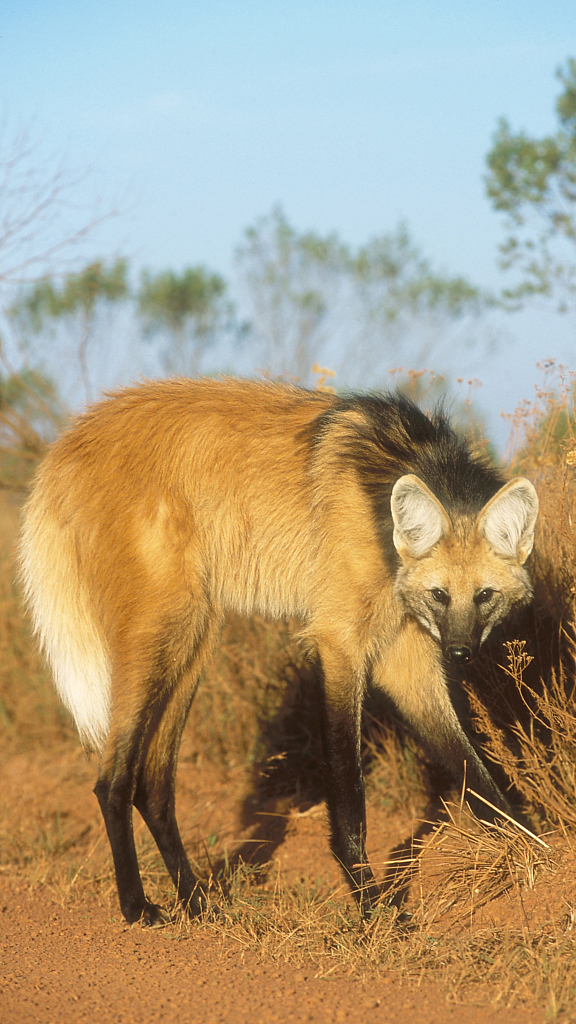
The proportion of height and length is almost 1:1. /VCG Photo
The proportion of height and length is almost 1:1. /VCG Photo
The most interesting fact about this animal is, despite it being called a "wolf," it is omnivorous, meaning that it eats a variety of food including plants. The maned wolf does hunt small preys, but more than 50 percent of its diet is vegetable, including sugarcane, roots and fruits. There is even a tomato-like fruit named "wolf apple" because it is the maned wolf's most common food. If a captured maned wolf is fed too much meat, it may get ill.
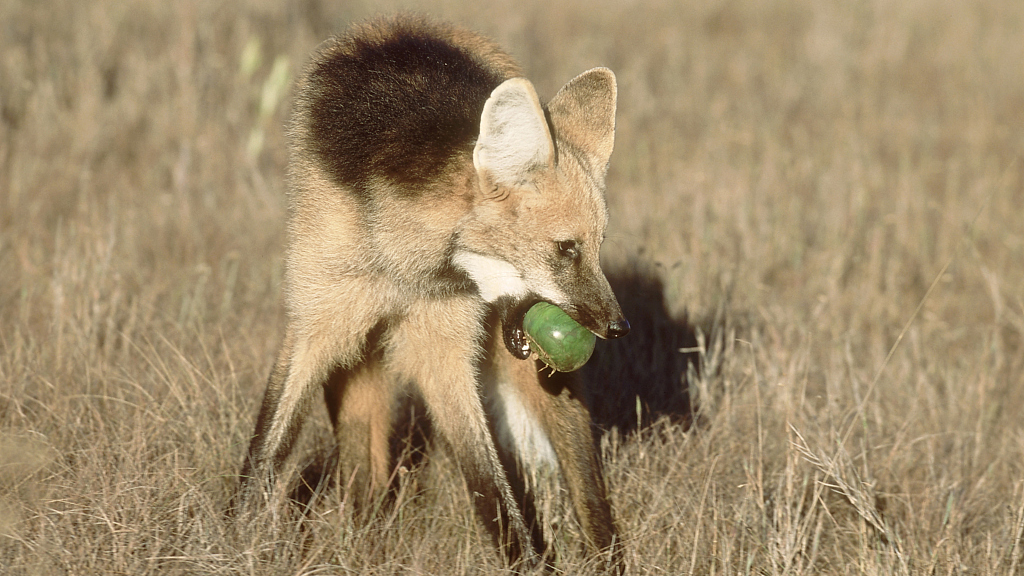
The maned wolf prefers fruits than meat. /VCG Photo
The maned wolf prefers fruits than meat. /VCG Photo
Though the maned wolf is a beautiful animal, you may not want to get too close: it emits a special odor, which is why it is also called "skunk wolf." The maned wolf's urine has a distinctive smell, too. It is said to smell like marijuana.
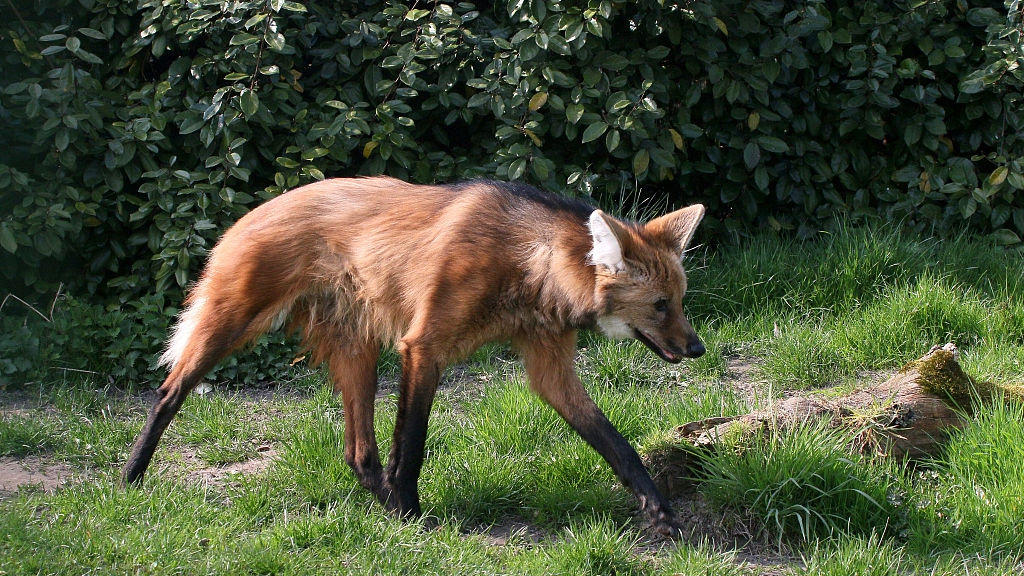
"Again, I am NOT a red fox!" /VCG Photo
"Again, I am NOT a red fox!" /VCG Photo
The shy animal is not a direct threat to human. However, it still gets killed. Roadkill, hunting and habitat loss are some of the main threats it faces. IUCN red list has assessed it as "near threatened" with a population of about 17,000.

Editor's note: the picture is not transformed. /VCG Photo
Editor's note: the picture is not transformed. /VCG Photo
(Cover image via VCG)
(If you want to contribute and have specific expertise, please contact us at nature@cgtn.com.)